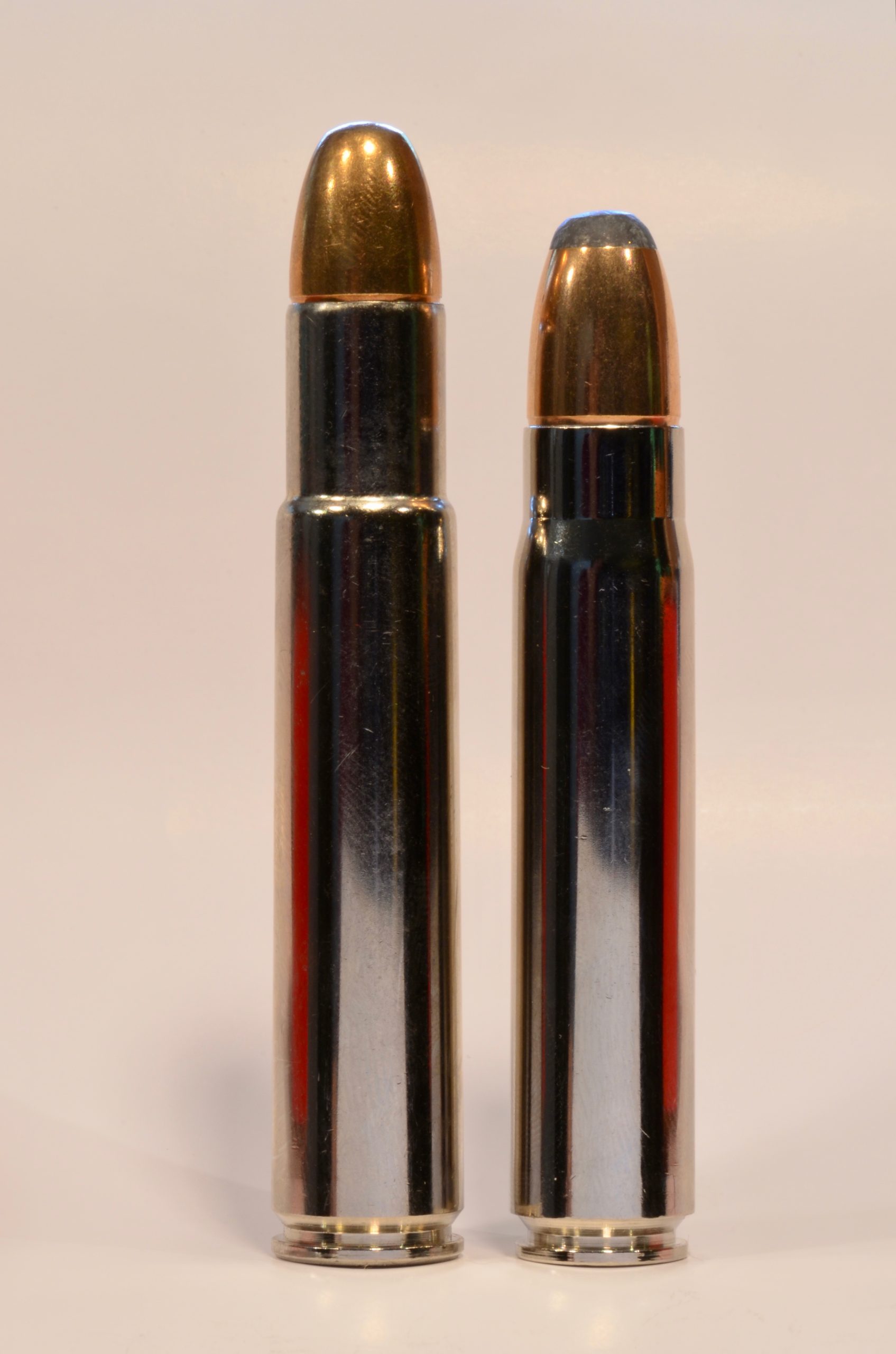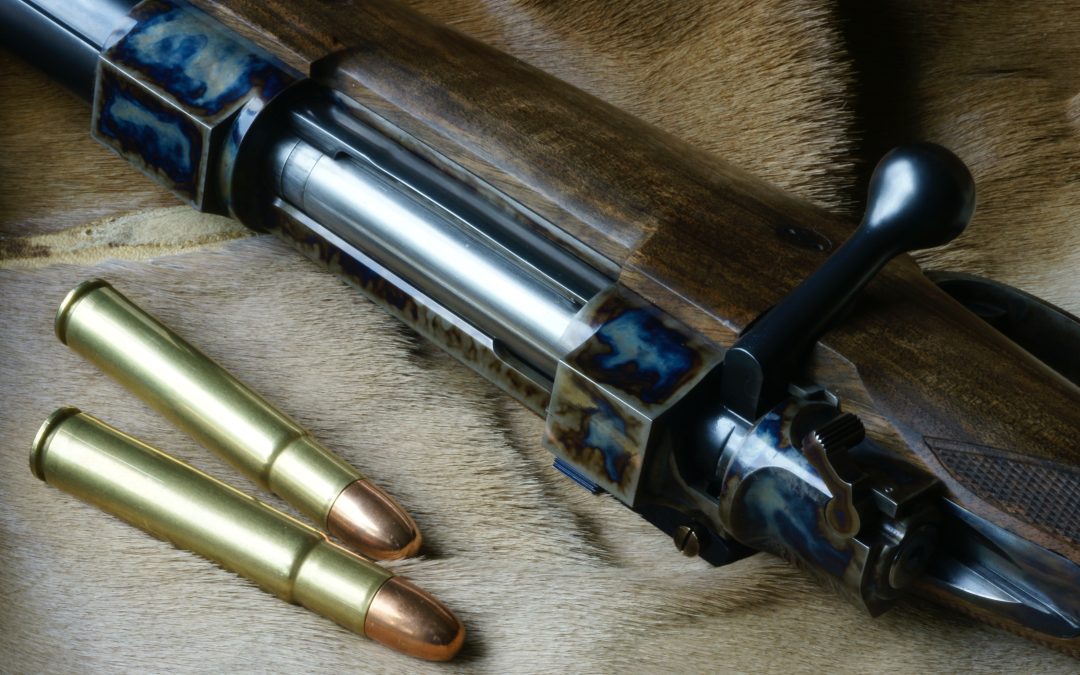A .505 Gibbs, built on a Granite Mountain magnum Mauser action. The action and the .505 Gibbs seem made for each other, probably because they actually were, way back when.
By Terry Wieland
In 1972, up on the Tana River in Kenya, I ran into a white hunter by the name of David Thompson. David was a thin little guy, going grey as might be expected of someone who made a living chasing mean stuff in the thornbush. He was armed with a squat, heavy-looking bolt action rifle, devoid of bluing but also devoid of rust. Obviously, a rifle that had been around, but was well cared for.
Naturally, I asked about it. A .505 Gibbs, he told me. Had it for years, he said, and it looked it. The magnum Mauser action appeared to have seen service at Dunkirk, if not Stalingrad, and who knows what its history was. In those days, anything hailing from Germany (including much of the French Foreign Legion) were a little cagey about discussing their past.
David handed me his rifle, and immediately I understood why Ernest Hemingway’s fictional hunter, Robert Wilson, described his own .505 Gibbs as “this damned cannon.” It was a cannon, indeed.
Largely due to Hemingway, the .505 Gibbs enjoys a reputation that far outstrips its actual use in the field, or the number that were even built in its first 80 years. Most estimates place the number of original .505s at no more than a hundred. Comparable figures hold for the equally fearsome .500 Jeffery and .600 Nitro Express.
The .505 was introduced by George Gibbs in 1911, using a completely original case. The .500 Jeffery, on the other hand, was an English rendering of the 12.5x70mm Schuler, which came along in the 1920s, designed specifically to function in a standard Mauser 98 military action. On paper, the .500 Jeffery shades the .505 ballistically, and, until the .460 Weatherby arrived, was touted as the most powerful magazine-rifle cartridge in existence.

A .505 Gibbs with a proper 22-inch barrel, this one a custom Granite Mountain. For reasons that escape me, it has become fashionable to fit .505 Gibbs rifles with 26-inch barrels. This is totally unnecessary, ballistically, and makes the rifle very unwieldy.
That claim probably accounts for the fascination with it by American big-bore enthusiasts ever since the first edition of Cartridges of the World appeared in 1965. For the record, the Jeffery (allegedly) uses a 535-grain bullet at 2,400 fps (6,800 ft.lbs.), while the .505 fires a 525-grain bullet (2,300 fps, 6,180 ft.lbs.) Ten grains of bullet weight and 100 fps account for an additional 1,820 ft.lbs., which shows how velocity can skew perceived power.
Without getting into all the technical details, I personally believe the .505 is a much superior cartridge, simply because it is big and roomy, has a stout rim for extraction (the .500 Jeffery rim is rebated), has a neck twice as long to firmly hold big bullets under substantial recoil, and operates at lower pressures — always a big plus in hot climates, hunting dangerous game.
Obviously, most American enthusiasts do not agree. After Norma introduced its African PH line a decade ago, .500 Jeffery outsold .505 Gibbs by a reported ratio of six to one. The comparative ballistics for Norma ammunition are: .500 Jeffery, 570-gr., 2,200 fps, 6,127 ft.lbs.; .505 Gibbs, 600-gr., 2,100 fps, 5,877 ft.lbs.
The Czech company, CZ, offers its big bolt action in both .500 Jeffery and .505 Gibbs, and since you are gaining nothing in action size or weight by going with the .500 Jeffery, I fail to see why anyone would take that over the .505, unless they are unduly impressed by paper ballistics. In terms of deadliness, there is nothing to choose between them (assuming they deliver the claimed performance) but much to be said for the .505 in terms of a dependable, usable hunting rifle.
And what can you hunt with them? In reality, they are elephant cartridges with some application for Cape buffalo under adverse circumstances. For most of us, they are simply too much gun for everyday use hunting anything. Having said that, some readers are sure to proclaim that it’s sure not too much gun for them. That attitude goes a long way to accounting for the .500 Jeffery’s popularity.

The .505 Gibbs (left) is larger than the .500 Jeffery, which will fit (just!) into a standard military Mauser 98 action. To make it fit, however, it has a rebated rim which can cause both feeding and extraction difficulties, and a neck that is really too short to grip a bullet under fearsome recoil. On paper, however, the Jeffery shaded the Gibbs, ballistically.

